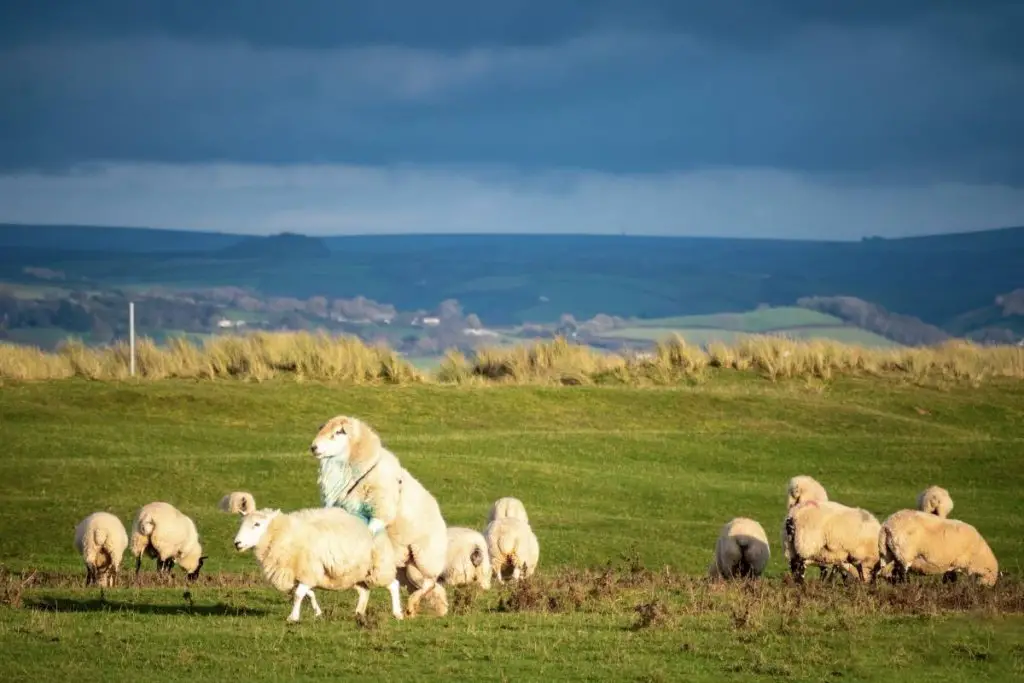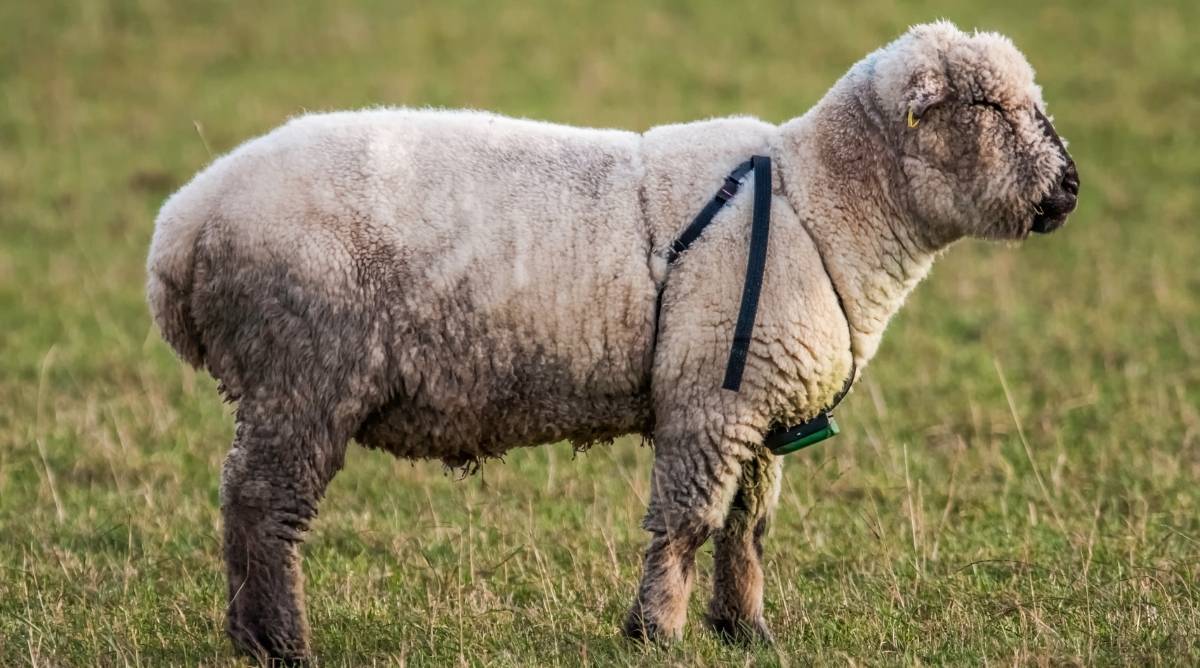The sheep harness (also called a ram marking harness or sheep breeding harness) is a strap put around a ram's shoulders, with a removable marking crayon on the breast. Sheep harnesses help farmers keep track of mating activities between ewes and rams.
Table of Contents
What is the Purpose of a Sheep Harness?
Sheep harnesses help farmers track and record ewes’ mating dates, ram details, and mating patterns.
One farming magazine confirms ram marking harnesses to be 90% effective in identifying successfully bred ewes in their flock.
This information is crucial when navigating sheep heat cycles, planning for lambing, and identifying the expected due date. Making a simple chart with mating and lambing dates saves you the anxiety of anticipating labor.
How To Use A Sheep Harness
Most sheep harnesses have straps (girth and shoulders), buckles and a plate angle. Some brands come with crayons for marking.
Here are four simple steps to fit a sheep harness:
Step 1: Pick out the girth and shoulder straps
- Girth straps go to the brisket area of your ram and have metallic rings and buckles.
Step 2: Place the marking crayon holder
- Place the part with a marking crayon holder or plate angle between your ram’s front legs
Step 3: Fasten and secure
- Fasten the straps from either side of your ram’s shoulder, take it over its back and snap it into the buckles.
- Adjust for a comfortable fit. If the straps are long, you may choose to trim them or neatly tuck them in.
- Ensure the straps crisscross your ram’s back to secure the crayon holder.
Step 4: Add the marking crayon and adjust
- Slide your marking crayon into the crayon holder, starting with the thinner part first.
- Use a provided metallic cutter pin to position and adjust it.
- Check to ensure the holes on the crayon block match those on the harness.
Adjust where necessary. Remember to fit the harness 2-3 days before releasing the ram to your ewes.
What Are Sheep Harnesses Made of?
Most sheep harnesses are made of nylon, weaver leather, or a combination of the two materials. They also have plastic or stainless steel buckles.
Nylon harnesses are durable, flexible, sturdy, and affordable. Leather harnesses look nicer and may be more comfortable for the sheep, but are prone to cracking.
How Long Does It Take To Fit A Sheep Harness?
It takes 10-25 minutes to fit a sheep harness, depending on the behavior of your ram.
Sheep harnesses come in a simple design with clip-in buckles. However, depending on the breed, size, and temperament, putting it on your ram could be easy or difficult.
For stubborn, big-sized rams, you’ll need the help of another person.
What Are The Benefits Of A Sheep Breeding Harness?

Aside from managing breeding in ewes, a sheep harness has other benefits:
1. Detecting ram infertility
You can use the crayon markings on ewes to understand your ram’s fertility during a breeding season. A fertile ram impregnates ewes within the first or second mounting.
If you notice the majority of ewes marked and re-marked severally on every cycle, your ram could be having low fertility or infertility.
2. Identifying ewes’ conception patterns
Each ewe conceives differently. During a mating cycle, some lambs don’t get estrous and may not mate. Using a sheep harness, you’ll find such ewes unmarked.
Those marked repeatedly on each cycle indicate difficulty in conception despite going into heat. Identifying these patterns helps in improving productivity.
3. Creating and maintaining sire records
For better flocks, it’s important to avoid inbreeding. A sheep harness marks sheep from unique breeding groups. You can distinguish between groups and maintain effective records with different harness crayons and ear tags.
4. Managing vaginal prolapse in pregnant ewes
Though rare, a small percentage of pregnant ewes are at risk of vaginal prolapse.
Increased estrogen level in the last trimester, pressure on the pelvis, uterus, or vagina, and relaxation of surrounding soft tissues are some of the factors surrounding vaginal prolapse.
A harness manages prolapses but should be removed four weeks before lambing. Consult your veterinarian for advice on suturing or antibiotics before trying any remedy.
5. Detecting out-of-season breeding
In some instances, lambs may get estrous during a different cycle. If you notice repeated markings on your ewe but no lambing, this may mean she went on heat but wasn’t fertile during that season of the year.
6. Making rams easier to handle
Catching a ram isn’t always easy.
By grabbing its harness, you can more easily move it from the ewe’s pen to its cage.

